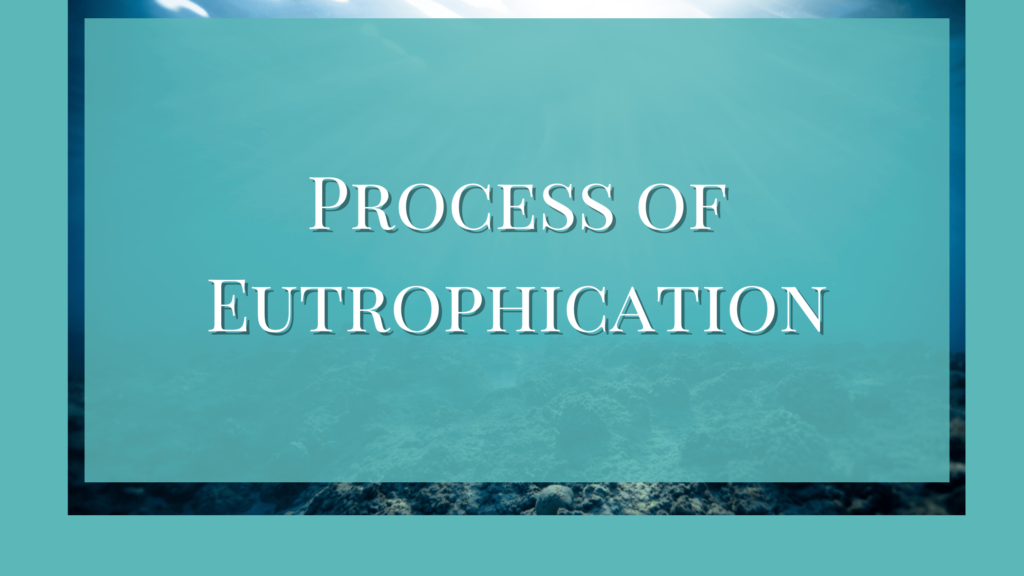Eutrophication is the overgrowth of algae and plants in water bodies due to the accumulation of inorganic compounds, leading to depletion in dissolved oxygen content. Eventually, the water bodies that undergo eutrophication will no longer have usable water.
The Process of Eutrophication Explained
Eutrophication is the excessive stimulation of plant and algal growth in water bodies due to the excess availability of inorganic nutrients such as nitrogen, phosphorous, etc. It results in the rapid growth of plants in water, especially the algal population. Such a rapid increase in algal population in water bodies like lakes and ponds is called an algal bloom.
Various human activities lead to the enrichment of inorganic content in water. As the algal population increases, their death and decomposition amounts also increase. This created a deficiency of dissolved oxygen in water. This oxygen deficiency will affect the growth of other hydrophytes leading to major reduction in animal and plant growth as well.
Causes of Eutrophication
Eutrophication is one of the leading reasons for the impairment of freshwater and marine ecosystems. It can be natural or cultural.
The natural process of eutrophication occurs due to the natural aging of water bodies when they get filled with sediments. The cultural eutrophication is man-made due to the discharge of inorganic nutrients into water bodies. Air pollution also contributes to the accumulation of nitrogen in water.
Consequences of Eutrophication
- It creates dense and foul-smelling phytoplankton in water which reduces the water quality.
- Algal blooms prevent light penetration to deeper layers of water thereby, reducing the growth of plants.
- It affects the success of predators that require light to catch their prey.
- It reduces inorganic carbon in the water and increases water pH which can blind water organisms.
- The reduction in dissolved oxygen will eventually create a dead zone that does not support life of any kind.
Eutrophication as Pollution Indicator
The process of eutrophication can be used as an indicator of oxygen concentration in deep waters. Usually, there will be no major change in deep water oxygen concentration which will be higher during summer. However, in eutrophic water bodies, the oxygen concentration will reduce rapidly.
Control of Eutrophication
Eutrophication is considered one of the most hazardous consequences of human activities on the aquatic ecosystem. It has widely affected the availability of potable water for humans. Different techniques are adopted to mitigate eutrophication.
- Chemical coagulants such as ferric sulfate, lime, and magnesium sulfate show the removal of almost 95% of nitrogen and phosphorus from aquatic ecosystems.
- Glutaraldehyde cross-linked chitosan can adsorb about 139.4 mg/g of phosphate, at optimal pH and a contact time of an hour.
- Using a nano-filtration membrane with a bioreactor (NF-MBR) can remove nitrates and phosphates in 62 days, from wastewater.
- Moreover, the biological technique of wetlands has higher efficiency in eliminating phosphates and nitrates. This technique uses floating plants with fibrous roots in the affected water body. The plants absorb the phosphates and nitrates but at the same time could cause extreme water loss due to evapotranspiration as well.
References
- Akinnawo, S. O. (2023). Eutrophication: Causes, consequences, physical, chemical and biological techniques for mitigation strategies. Environmental Challenges, 12, 100733. https://doi.org/10.1016/j.envc.2023.100733
- Chislock, M. F., Doster, E., Zitomer, R. A. & Wilson, A. E. (2013) Eutrophication: Causes, Consequences, and Controls in Aquatic Ecosystems. Nature Education Knowledge 4(4):10 https://www.nature.com/scitable/knowledge/library/eutrophication-causes-consequences-and-controls-in-aquatic-102364466/
- Saquib, S., Gupta, A., & Joshi, A. (2021). Emerging water crisis: Impact of urbanization on water resources and constructed wetlands as a nature-based solution (NbS). Current Directions in Water Scarcity Research, 6, 447-468. https://doi.org/10.1016/B978-0-323-91838-1.00021-X




